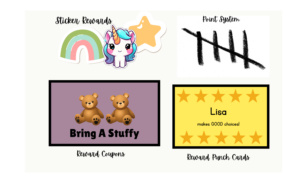If you’ve ever felt like your teaching is failing daily, you’re not alone. Many new teachers step into the classroom fully prepared with lesson plans, classroom management strategies, and a passion for teaching—only to find that nothing seems to go as expected.
The biggest missing piece? Reading nuances.
Understanding the subtle, unspoken dynamics of a classroom is what separates a struggling teacher from a confident one. It’s also the hardest thing to learn because it’s not in any textbook or teacher training program. Without this skill, every day can feel like a battle—students disengage, behaviors escalate, and no strategy seems to work.
What Is Reading Nuances in the Classroom?
Reading nuances means picking up on the tiny, often unnoticed cues that tell you what’s really happening in your classroom.

It’s understanding:
- Student Engagement Levels – Are students still following, or are their eyes glazing over? Are they confused but not asking for help?
- Behavioral Shifts – Is a student acting out because they need attention, because they’re frustrated, or because they’re testing boundaries?
- Energy & Timing – When is it time to move on from an activity? When does a transition need to happen faster?
- Subtle Social Dynamics – Are certain students dominating discussions? Is someone always left out?
- Your Own Presence – Are students responding to your tone, body language, and pacing the way you expect? Or are you losing them without realizing it?
Why New Teachers Struggle with This
1. It’s Not Taught in Teacher Prep Programs
College courses teach lesson planning, behavior management, and pedagogy—but they don’t teach how to “read the room” in real time. You can plan the perfect lesson, but if you can’t adjust based on what’s happening in the moment, it won’t work.
2. New Teachers Are Too Focused on the Plan
New teachers often stick to the plan no matter what because that’s what feels safe. But the best teachers know when to pivot—when to slow down, change directions, or completely switch gears.
3. It Takes Time and Experience
No one walks into their first year and just “gets it.” Reading nuances comes from trial, error, and reflection. The problem? New teachers feel like failures while they’re learning, even though struggling at first is completely normal.
4. When You Can’t Read Nuances, Teaching Feels Like a Losing Battle
When you don’t pick up on small cues, you start experiencing:
❌ Students disengaging—but you don’t realize why
❌ Escalating behaviors—because you didn’t catch the warning signs
❌ Feeling out of control—because you can’t predict what’s coming next
❌ Overwhelm and burnout—because nothing you planned is working
And worst of all? It feels personal. Like you’re failing as a teacher.
How to Build the Skill of Reading Nuances
The good news? This is a skill you CAN develop. Here’s how:
1. Start Noticing the Small Stuff
Instead of focusing just on what you planned, start looking for:
🔹 Who looks confused but isn’t raising their hand?
🔹 Who keeps glancing at the clock (aka, they’re bored)?
🔹 Who just checked out the moment you gave instructions?

2. Pause and Ask Questions
Instead of powering through lessons, check in often:
🗣️ “Does this make sense so far?”
🗣️ “Turn to a partner—what’s one thing you just learned?”
🗣️ “Give me a thumbs-up if you’re ready to move on.”
Why? Because students don’t always tell you when they’re lost—but their body language will.
3. Use Wait Time (Even When It Feels Awkward)
Many new teachers rush through questions instead of waiting for student thinking. If no one answers right away, give it 5-10 seconds. Silence feels uncomfortable at first, but it signals to students that you expect them to think and respond.
4. Watch the Best Teachers in Action
If you have a mentor teacher or a colleague whose classroom feels effortlessly smooth, watch how they read the room. Pay attention to how they adjust their pacing, tone, and responses based on student energy.
5. Videotape Yourself (If You Can)
One of the best ways to improve is to see yourself teaching. You’ll notice things you never caught in the moment—like students zoning out, certain behaviors escalating, or how your tone and pacing affect engagement.

Final Thoughts
New teachers often feel like they’re failing because they haven’t yet mastered the art of reading nuances. But the truth is, this skill takes time to develop. No teacher walks in on Day 1 knowing exactly how to read a classroom.
The key is to start noticing the small moments, reflecting on them, and making small adjustments every day. With time, you’ll start to see patterns, anticipate student needs, and feel more in control of your classroom.
And before you know it? Teaching will feel a whole lot easier.



